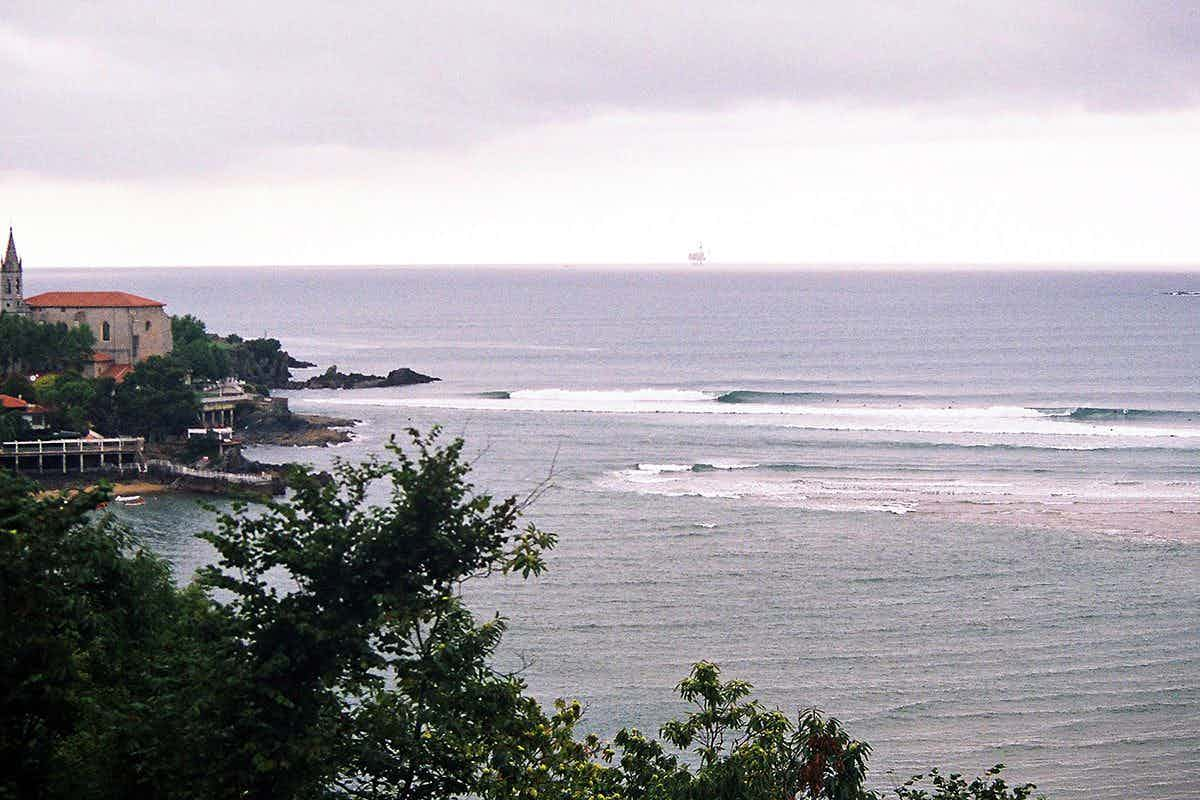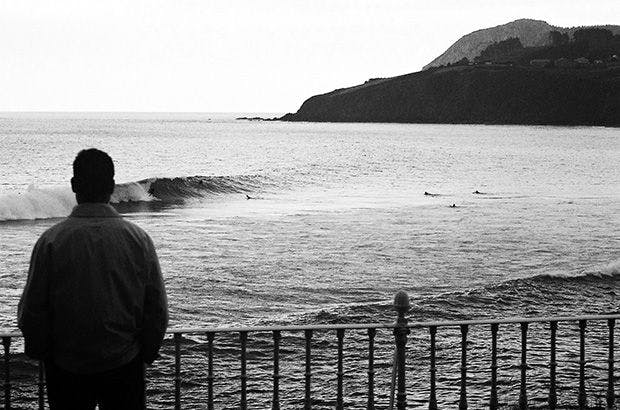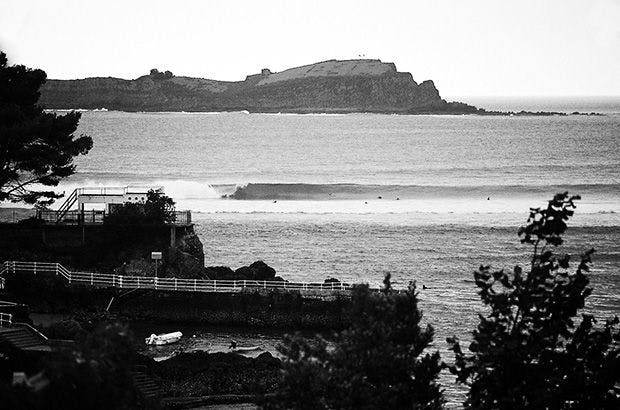NatureSave The Sand, Save Mundaka

Mundaka. You can see it in your mind’s eye I’ll bet, as soon as you read the name; a perfect left drawing off the sand bar and throwing a flawless almond shaped barrel that reels and reels across the river mouth for hundreds of meters, with the picturesque harbor of Mundaka and the chapel of Santa Catalina in the background. It is a special place, and it is a fragile place. As Jimi Hendrix once pointed out, “And so castles made of sand, fall in the sea, eventually” and this we know only too well as surfers, watching the sand shift and move with time under the power of the waves. But our sand castles, the banks and bars that so many of our waves break over, are cyclical and are replenished and rebuilt by nature itself. The problems often start when we humans start to meddle with the natural movement of sand.

Many of the beaches of Western Europe have still not recovered from the enormous and powerful storms of the winter of 2013-2014, and are still a way away from returning to “normal”. This is certainly true of the beach at Laida (Laida Ibarrangelu), the small village on the other side of the river mouth from Mundaka where the damage from the storms has resulted in there being no beach at high tide. A recent study claims that the beach at Laida is visited by around 210,000 tourists annually and generates around 4.8 million Euros. However, with no beach to visit for significant portions of each day last summer, local business saw a slump in turnover of around 30%. The local government wishes to address this and their solution is to “put the beach back” in time for this summer’s influx of visitors. To achieve this, 40,000 cubic metres of sand will be taken from the harbor at Mundaka by dredging, and more worryingly, from the intertidal area of the sandbank at Laida and placed on the beachfront at Laida to build up the “dry” beach. Because the local government wants to restore the beach before the tourist season really kicks in, they labeled the project “urgent” and thus bypassed the legal requirement for an environmental impact study to be undertaken. The surf community, both local and worldwide, is obviously seriously concerned about the impact that this project will have on the famed wave at Mundaka. In 2003 the dune at Laida was rebuilt with dire consequences for the wave, which failed to truly barrel for the next two years, and the fear is that altering the amount of sand available to feed the sandbar will have noticeable knock-on effects on wave quality. This isn’t just a case of local surfers being concerned about the quality of their local break; surfing is a major asset to the local economy and that can all be traced back, essentially, to the way that the sand settles across the river mouth. It draws surfers from all over Europe and the rest of the world, particularly in late summer and early autumn, which provides income for local businesses and supports the local surf industry. Local surfers are keen not to joust it out with their neighbors on the other side of the river over which area of sand is more important to the regional economy, however they wish to be considered and consulted.
“Mundaka, as any natural wonder, needs to be preserved because it is a perfect example of nature in balance. It needs to be preserved for the pure joy of everybody that has built their lives around its rhythm, and for the pure joy of any non-surfer who might otherwise not witness the magic of lines marching into the estuary on a day when it is eight-foot and off shore!” says Sancho Rodriguez, the organiser of the Surfilm Festibal in San Sebastian and a regular surfer at the famed river mouth. “We cannot do a technical judgement, neither can we determine if the project is going to affect the wave or not. But, with the experience of other past alterations on the sand system, the uncertainty created by the scientist in charge of the study who cannot assure us that the wave won´t be affected, and simply by the pure logic of taking a mountain of 100 meters x 100 meters x 4 meters high of sand in front of the sandbar, we can only wait for the first swells of the season to see how the sandbar will be working.”
A group of local surfers (including Rodriguez) have organised public meetings with various stakeholders, including local government officials, the director of the Urdaibai UNESCO Biosphere Reserve, the technician in charge of the beach regeneration project and local oceanographers. Their aim is to ensure that the wave at Mundaka, and the surfers and businesses for who it is so important, are properly represented and have a chance to raise their concerns.

The outcome of this latest round of dredging, digging and bulldozing on the quality of the wave at Mundaka won’t be known until the first significant swells of the coming autumn arrive. It goes without saying, though, that if Mundaka fails to live up to its former glories this year then the surfing community will point the blame squarely at this beach replenishment programme.
Further information about the beach replenishment programme at Laida and the actions that local surfers are taking can be found here.